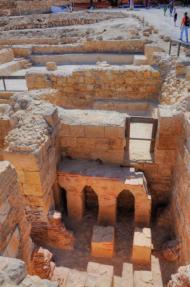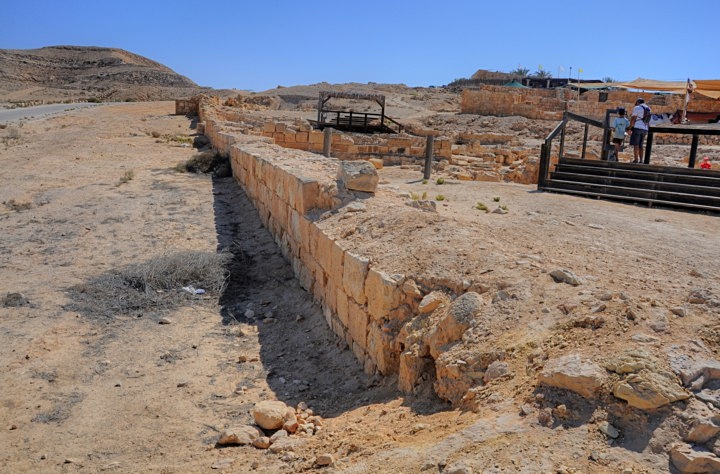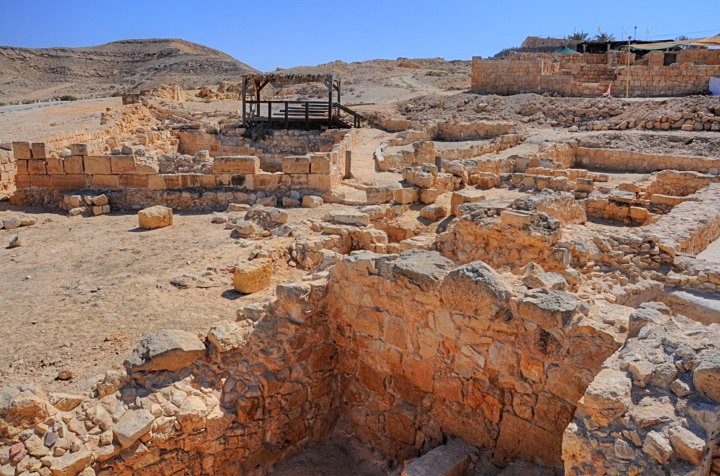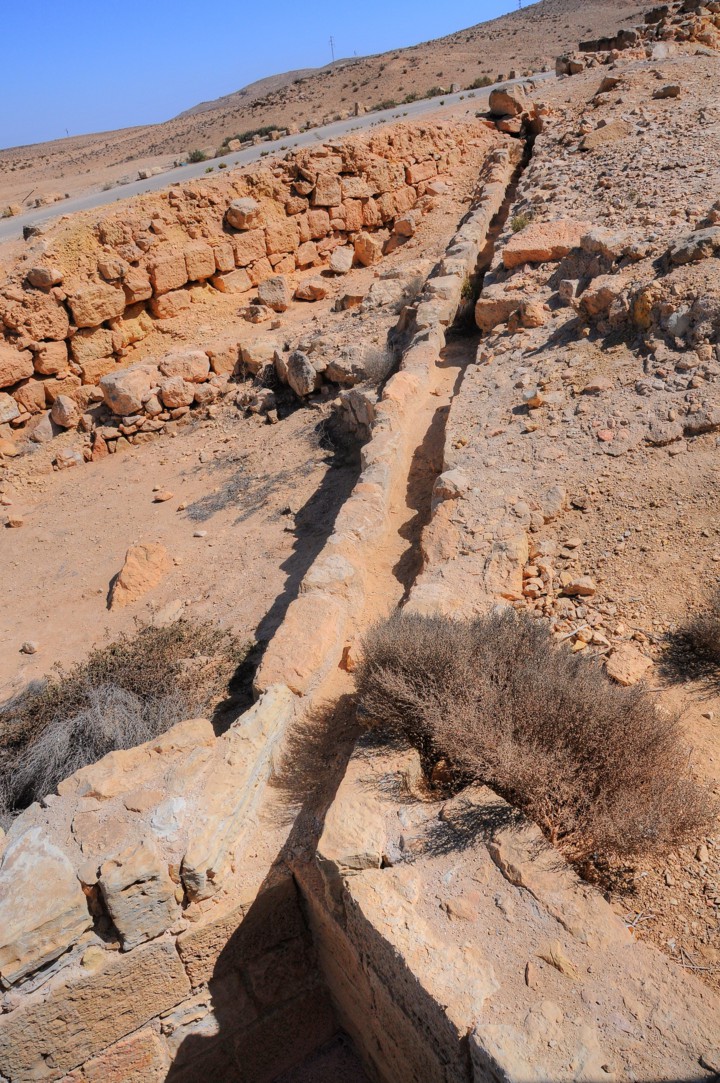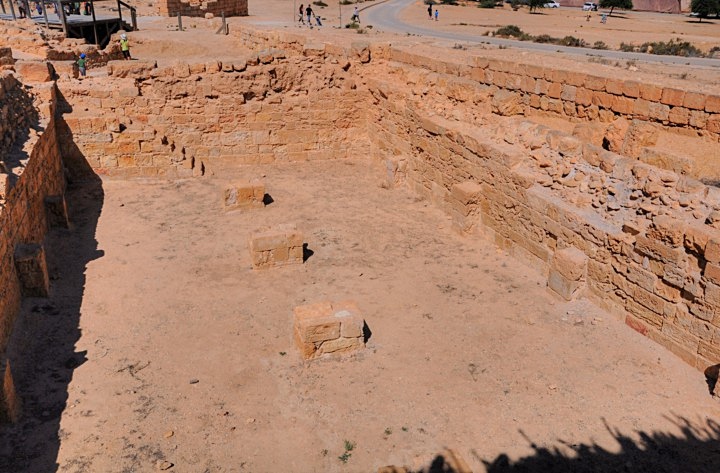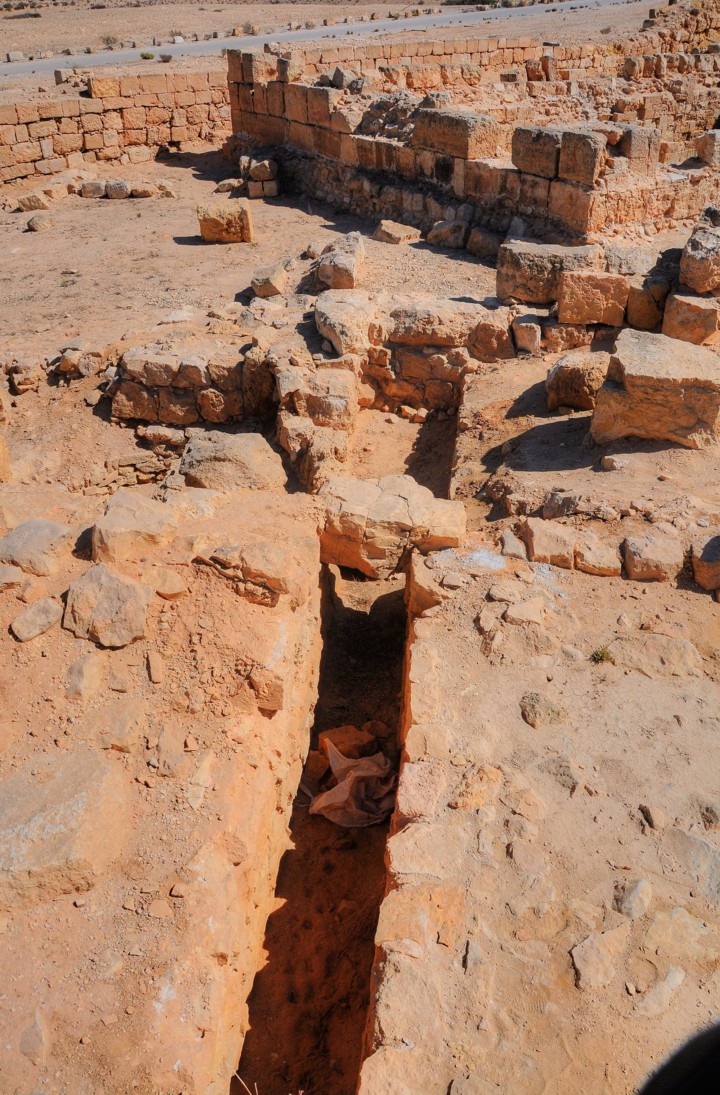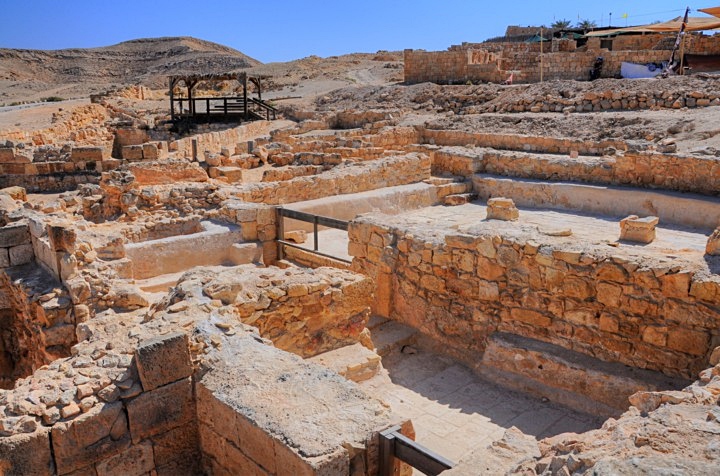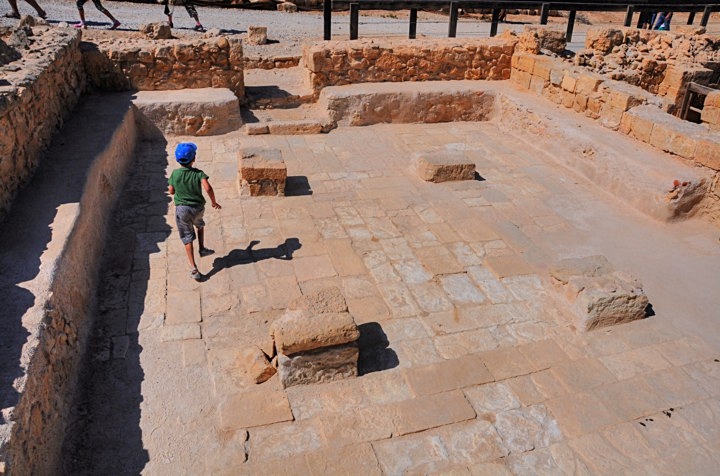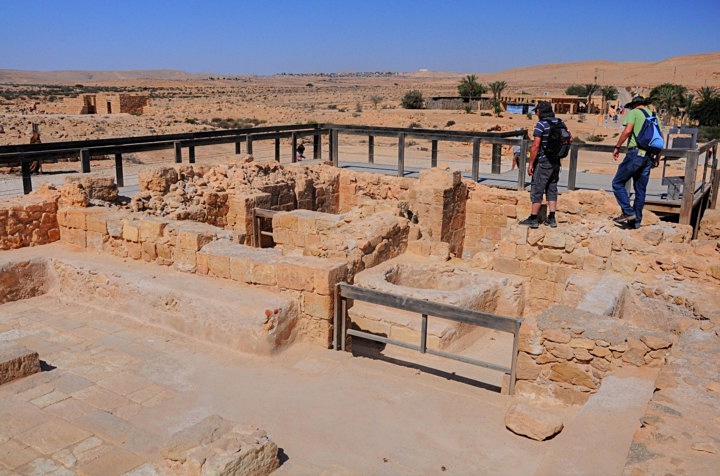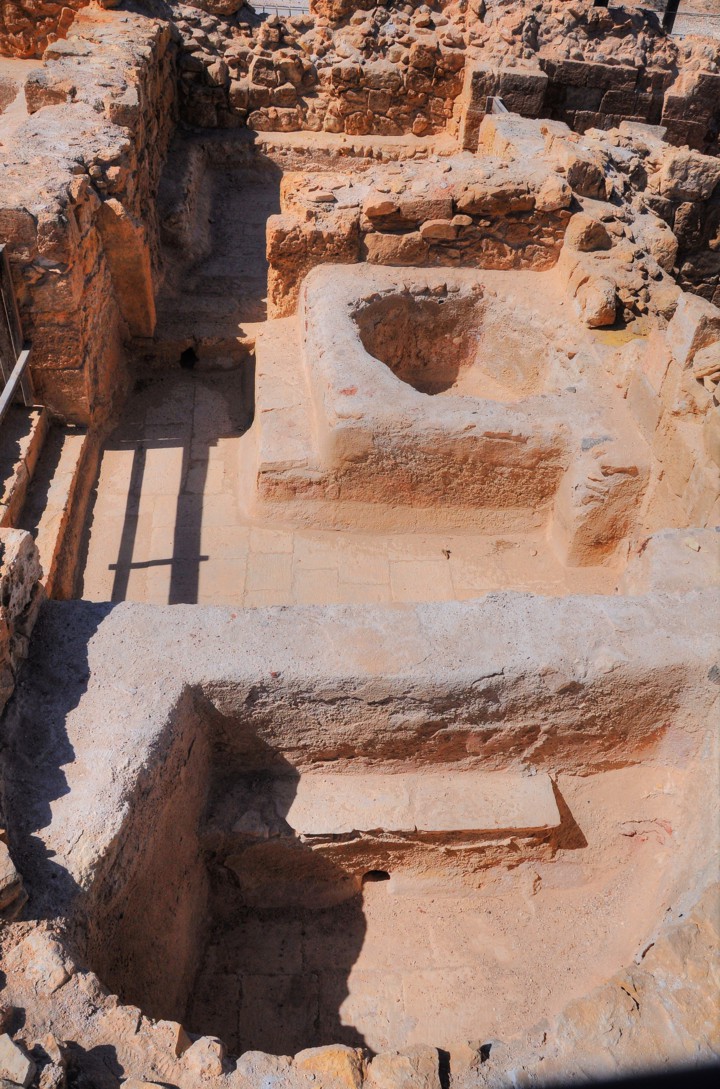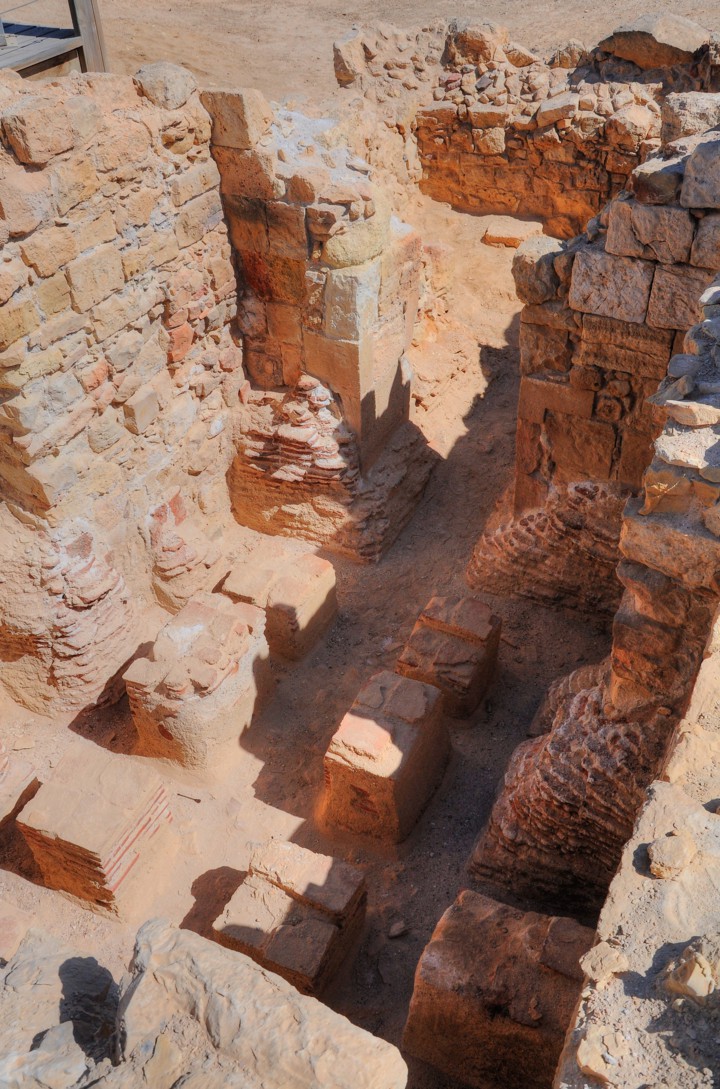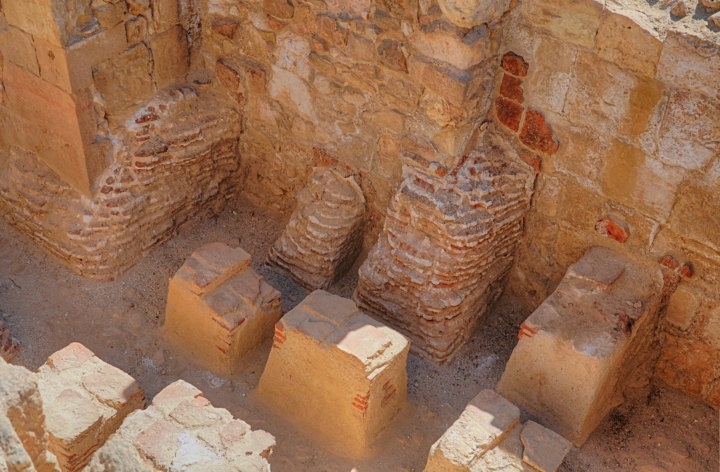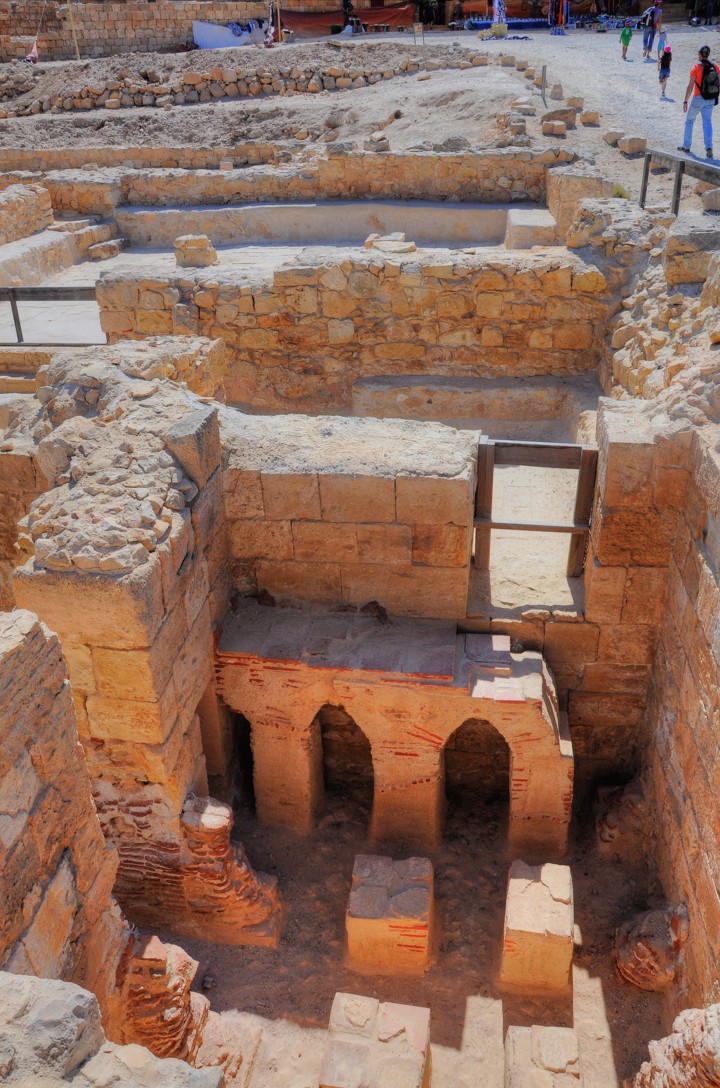Large public water reservoir and a Byzantine bathhouse on the south-eastern side of Mamshit.
Home > Sites > Negev > Mamshit > Water Works
Contents:
Background
Photos
* Aerial views
* Ground view
* Reservoir
* Bathhouse
* Cisterns
Etymology
Links
Overview:
Two public structures are located on the south-eastern side of the city: a large water reservoir and a Byzantine bathhouse.
![]() Read more about Mamshit in the overview page.
Read more about Mamshit in the overview page.
Photos:
(a) Aerial view
The Mamshit water works are located on the east side of the city. A drone view of the area of the reservoirs, bathhouse and cisterns shows these structures from the north side.
Click on the photos to view in higher resolution…
The major points of interest are marked on the view:
The following sections provide details on the highlighted points of interest.
(b) Ground views
The public reservoir and bathhouse are located along the south-east city wall.
A view of the structures is seen below – with the reservoir in the back and the bathhouse hidden on the lower right side.
The plan of the public structures is illustrated below. An aqueduct on the right led the waters from the valley into the roofed reservoir. These waters were supplied to the bathhouse. The bathhouse contained several rooms, based on the common architecture of the Roman bathhouse.
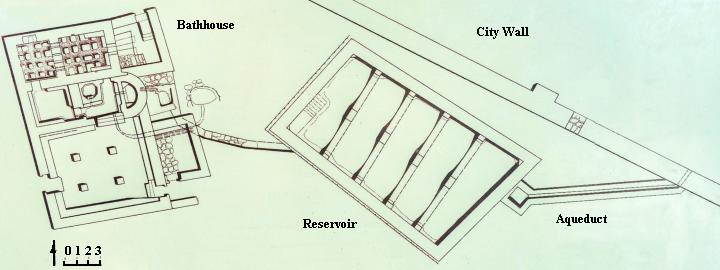
Mamshit Water works Plan – as illustrated on a sign near the bathhouse
The following sections provide more details and photographs of the reservoir and bathhouse.
(c) Public Reservoir
A large water reservoir is located along the south-eastern city walls. The roofed structure, covering a volume of 3 x 10 x 18 m, contained 500m3 of water. It supplied water to the bathhouse.
Its location is indicated on the map as a red square.
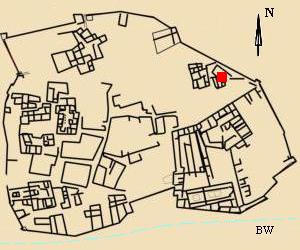
On the corner near the city wall was the water inlet: a channel let the water in from the reservoirs in the valley. The water was filtered in the chamber seen on the lower left side.
The base of the reservoir is seen below. The roof was supported by the 24 bases of the arches. On the north side of the reservoir was a staircase that allowed to climb down into the floor in order to fetch the lower levels of waters and to clean it from the filth on the bottom.
The water outlet fed into the bathhouse. Its waters were also used to supply water for other structures and possibly to another unknown bathhouse.
(d) Byzantine bathhouse
A bathhouse complex is located near the reservoir. Its location is indicated on the map as a red square.
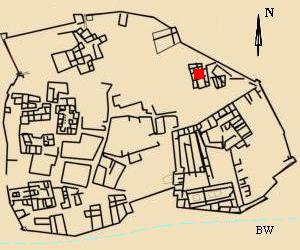
The bathhouse followed a standard Roman design. It contained several rooms – dressing room, cold room, tepid room, hot room and a furnace.
The southern room was an apodyteriuma room just inside the entrance where the bather stored his clothes. This was partially roofed, with a set of benches aligned along its walls.
A number of stairs led the bather from the dressing room to the frigidarium (cold room), with its tank of cold water, then to the tepidarium (warm room), and finally the caldarium (hot room).
The small and paved frigidarium (cold room) were two vessels containing cold water: a semi-round vessel and an octagon shaped vessel. The bathers immersed into the water. At the bottom of the vessels are small outlets used to flush the dirty water to a cistern outside of the structure.
Near the cold room was the tepidarium (warm room), where the bathers sat or lied on the floor. In this room they also received massages with oil and scraping with metal implements after the bath.
The northern room was the caldarium (hot room). A brick based stove warmed the waters inside the bath, using the Hypocaust method (under floor heating system, based on hot air which was pumped under the floor and heated the waters) . This room had 3 chambers, built on a lower level in order to preserve the heat.
On one side of the room was a furnace, built on layers of bricks and mortar. The furnace heated the bronze vessel with water, producing steam. A high chimney, based on bricks and mortar, let the smoke out of the room.
The red bricks below the floor and the clay pipes along the walls allowed the hot air to flow and heat up the room.
Another view of the bathhouse, with all three rooms (from bottom to top): caldarium (hot room), tepidarium (warm room on the right), frigidarium (cold room on the left), and the apodyterium (dressing room).
(e) Cisterns
On the south side of the bathhouse is an open courtyard. Under the paved floor is a cistern, which stored water from the rain water. These cisterns, located in many sections of the city, were the main source of water supply for the residents.
Etymology (behind the name):
- Mamshit – unknown source of the name.
- Mampsis – Greek name of the city.
- Kurnub – Arabic name of Mamshit. Means: drink of milk, honey and dates.
Links:
* Water links:
- Water in the desert (Judean desert)
* Mamshit sites in BibleWalks:
Mamshit Water works (this page)
BibleWalks.com – Ancient wonders in the Negev desert
Mamshit Market <—previous Negev site—<<<All Sites>>>—next Negev site—>>> Tel ‘Aro’er
This page was last updated on Feb 27, 2016 (Added Aerial views)
Sponsored links:
